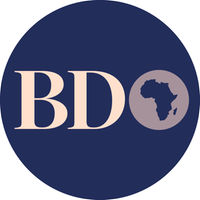
KDIC chief executive Mohamud Ahmed Mohamud . FILE PHOTO | NMG
Summary
- KDIC has enforced the revised deposit insurance coverage limit of Sh500,000, up from Sh100,000.
- However, the risk-based assessment model that was scheduled to be rolled out in July 2020 was extended to July 2021 since the banks were already struggling with rising defaults and pressure to restructure loans.
- Central Bank of Kenya (CBK) data shows that the value of loans defaulted hit Sh423 billion or 14.1 percent of the total Sh3 trillion loan book.
Banks have paid Sh5.5 billion in deposit insurance after the lapse of a six-month moratorium to ease their cash constraints amid the adverse effects of the coronavirus pandemic.
Mohamud Ahmed Mohamud, the chief executive officer of by the Kenya Deposit Insurance Corporation (KIDC), said the banks remitted the payments in December, boosting the corporation’s fund used to insure the Sh4.02 trillion customer deposits as at November.
“All the banks paid by December 31, after the six-month window extension expired,” Mr Mohamud said.
The Sh5.5 billion premiums were calculated at a flat rate of 0.15 per cent of the total deposits per annum using an old formula which lapsed in July last year.
Under a new arrangement, banks are required to pay premiums based on their individual risk profiles — capturing elements such as their liquidity positions, capital adequacy, asset quality and governance structures. Those deemed risky would pay higher premium to the fund compared with their relatively stable counterparts.
KDIC has enforced the revised deposit insurance coverage limit of Sh500,000, up from Sh100,000.
However, the risk-based assessment model that was scheduled to be rolled out in July 2020 was extended to July 2021 since the banks were already struggling with rising defaults and pressure to restructure loans.
Central Bank of Kenya (CBK) data shows that the value of loans defaulted hit Sh423 billion or 14.1 percent of the total Sh3 trillion loan book.
Customers also extended repayment periods on loans worth Sh1.63 trillion by end of December, an equivalent of 54.2 percent of total loan book.
The deposit insurance fund, run by KDIC, was created to compensate depositors of collapsed institutions and to boost confidence in the banking industry that had been rocked a by a series of bank failures in the 1980s and early 1990s.
It began retooling its operations following the return of bank collapses that hit Dubai Bank, Imperial Bank and Chase Bank in less than a year after the institutions faced liquidity challenges and couldn’t meet depositor demands.
Mr Mohamud said KDIC and regulators would focus on forestalling bank failures or ensuring minimal disruption of depositors and the banking industry at large.
The coronavirus pandemic has piled new liquidity pressures on banks which now want the regulator to lend them money cheaply to support their operations, but do so discreetly so that they are not viewed as weak.
In a credit survey report, banks made proposals to the CBK and the Treasury come up with other specific measures that particularly cushion institutions, including encouraging use of the discount window at minimal rate and without the stigma that is associated with the use of the facility.
Borrowing from the regulator through the discount window is often seen as an indication that the appropriating bank is desperate for money and cannot get it from other banks at the interbank market—putting at risk of a fallout with investors and depositors.
Traditionally the regulator is the lender of last resort for banks after exhausting all other avenues, including borrowing from each other.
The CBK currently charges 13 percent to access money at the discount window.





No comments :
Post a Comment